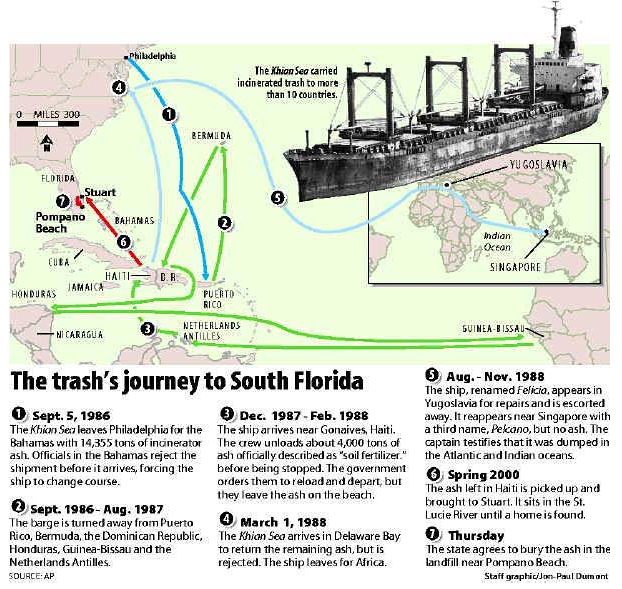Around the world with the Khian Sea Garbage Barge
This week, we’ll take a look at a historic e-waste incident known as the Khian Sea waste disposal incident. Hailing from Philadelphia, Pennsylvania, the Khian Sea ship carried 15,000 tons of municipal ash from the city’s incinerator and embarked on its journey to the Bahamas in August 1986. Over a course of 27 months, the ship traversed the world hoping to find places to dump its load of toxic ash.

A map and timeline of the route taken by the Khian Sea vessel to dispose of the 15,000 tons of Philadelphia waste ash on board (Groff, 2016).
From this event, it was clear that more had to be done regarding e-waste disposal laws, especially internationally. It sparked the creation of the Basel Convention, an international treaty which restricts the flow of hazardous waste between countries.
More importantly, this incident was one of the first to highlight e-waste as a global controversy, as well as the pressing issue of e-waste exportation from developed to developing countries. Next time, we’ll take a look at what this signifies for the global flow of e-waste exports, the global distribution of e-waste and subsequent imbalances in the politics of e-waste.
References
Groff, D. (2016). Tracking the Khian Sea. Philadelphia Encyclopedia. Retrieved 27 January 2022, from https://philadelphiaencyclopedia.org/screen-shot-2016-04-18-at-1-03-51-pm/.


